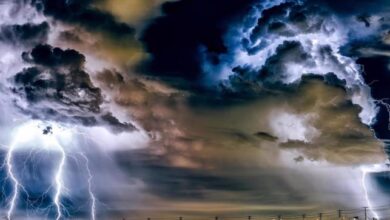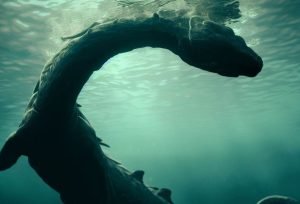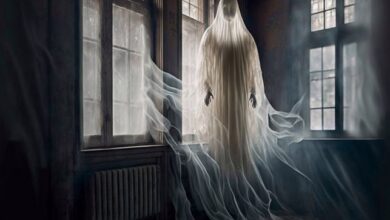You Might Wonder What the Connections Are
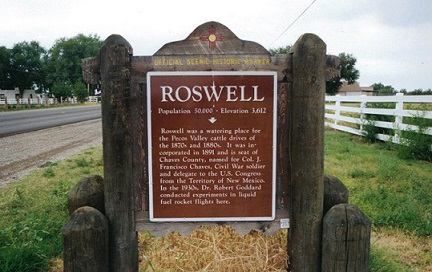
Bring the name of “John Keel” into a debate, and most people wil probably think of The Mothman Prophecies.The blurb from the publisher for the book goes as follows: “West Virginia, 1966. For thirteen months the town of Point Pleasant is gripped by a real-life nightmare culminating in a tragedy that makes headlines around the world. Strange occurrences and sightings, including a bizarre winged apparition that becomes known as the Mothman, trouble this ordinary American community. Mysterious lights are seen moving across the sky. Domestic animals are found slaughtered and mutilated. And journalist John Keel, arriving to investigate the freakish events, soon finds himself an integral part of an eerie and unfathomable mystery.” And, there’s no doubt that Keel’s book is still a classic.
The fact, though, is that Keel had a deep interest in the Roswell event. He spent a lot of time investigating, and his conclusions were very similar to mine: namely that there was a Japanese component to Roswell, along with Japanese people, too. Let’s begin. Over the years, there has been a small amount of Roswell-related debate on John Keel’s assertion that what came down at the Foster Ranch, New Mexico in July 1947 was a Japanese Fugo balloon. In terms of what, exactly, those particular balloons were, let’s take a look at what Linton Weeks noted, in a 2015 online article titled “Beware of Japanese Balloon Bombs.”

He wrote: “At some point during World War II, scientists in Japan figured out a way to harness a brisk air stream that sweeps eastward across the Pacific Ocean — to dispatch silent and deadly devices to the American mainland.” Weeks continued: “The project – named Fugo – ‘called for sending bomb-carrying balloons from Japan to set fire to the vast forests of America, in particular those of the Pacific Northwest. It was hoped that the fires would create havoc, dampen American morale and disrupt the U.S. war effort,’ James M. Powles describes in a 2003 issue of the journal World War II. The balloons, or ‘envelopes,’ designed by the Japanese army were made of lightweight paper fashioned from the bark of trees. Attached were bombs composed of sensors, powder-packed tubes, triggering devices and other simple and complex mechanisms.”
John Keel and Roswell, a timeline begins: In 1990, Keel outlined his theories that the Roswell wreckage came from a Fugo balloon. He did so in the pages of Fate, a still-popular magazine on the paranormal that has existed for decades. In Keel’s own words, and in relation to the post-Second World War era, we have this: “A curtain of secrecy continued to shield the unwary public from the explosive balloons in their midst. The biggest breach of this security occurred in July 1947, at the height of the first ‘flying saucer scare’ when, after a severe storm, the remains of one of the balloons was found on a ranch in Lincoln County, New Mexico. Local newspapers described the find, and the wire services picked up the story. Later, military authorities carted away the materials and announced it was nothing but a ‘weather balloon.’ Obviously, they were determined to keep the existence of the Fugo balloons a secret two years after the war. In fact, few knew about the Fugo project until the 1950s, when a small Japanese booklet on the subject was published.”
The Fugo balloons were, potentially at least, highly dangerous. The bombs they carried did, unfortunately, result in loss of life in the United States, albeit only on one occasion, in Oregon in May 1945. But, the balloons were flimsy and they were certainly not capable of carrying a human crew. Keel, however, was most definitely onto something when it came to the matter of Japanese balloons. As we have seen, in the post-war period the U.S. military acquired secret plans for new, massive balloons that the Japanese were building before Hiroshima and Nagasaki were bombed, and it was these specific balloons that are part and parcel of the story that this book tells. In fact, the people I interviewed for my Body Snatchers in the Desert book said that some of the secret 1947 flights involved gliders held aloft below massive balloon arrays. They were based on Japanese designs for what was specifically described as a next-generation Fugos. But, most certainly, they were not the far smaller, less advanced designs that were used to attack the United States during the latter stages of the Second World War. There is, however, yet another aspect of Keel’s work that definitely needs highlighting, as we shall now see.
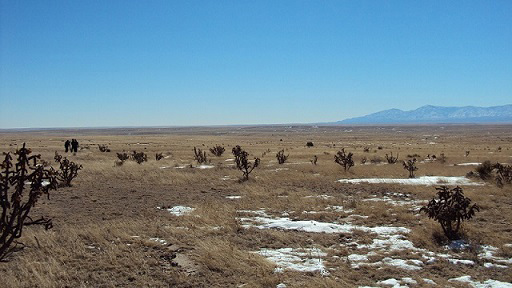
In 1993, Keel was once again hot on the trail of Roswell’s Japanese balloon. This time, however, his focus was on manned balloons. From 1990 to 1993, there was a deep and ongoing debate on the Roswell / Fugo matter in the pages of Fate magazine, with comments, observations and articles from the likes of Keel himself and Roswell authority, Kevin Randle. There is something I find very intriguing about this particular matter. Many of the people who, over the years, have commented on Keel’s Fugo theory failed to note – or didn’t even comment on the fact – that he also talked about uncovering data on Japanese balloons with crews that, allegedly, reached the U.S. in the closing stages of the war, and which – his sources said – were subject to stringent U.S. military secrecy. By crews, I mean people. In April 1993, in an article titled “Return of the Fugos,” Keel revealed that in the wake of the publicity given to his original “Roswell was a Fugo balloon” theory, he was contacted by three people who had an intriguing story to relate of certain things that occurred to them back in the 1940s, specifically in the California desert. These same things – which took place at some point in early 1945 – concerned the sighting by all three of a low-flying balloon that had a gondola attached below it, and which, said one of the trio of witnesses, contained “a living creature.”
As the balloon came closer, said Keel, the “creature” could now be seen as “a very small man wearing some kind of headgear, probably radio headphones. The poor fellow was clearly agitated…He appeared to be Oriental.” The balloon then disappeared over the horizon. No sooner as it had done so, when a couple of U.S. military jeeps quickly appeared on the scene, heading in the direction of the balloon. A few minutes later, the ominous sounds of gunshots rang out. Realizing that the group of three friends had seen or heard pretty much all that had taken place, the military returned and sternly warned them not to say anything about what they had experienced – to anybody at all. They might as well have added “or else,” just to make sure the threat had left its mark. Keel himself commented on this matter – of secret Japanese balloon-based flights to the U.S. undertaken in the latter stages of the Second World War with people on-board – as follows: “If such a project was launched, they would have selected the smallest, lightest volunteers available…It is also likely they might have expired during the trip…their complexions would have been very odd, discolored by the cold…”
He concluded on this matter: “If even one such volunteer balloonist attempted the trip and crashed, we would have the answer to all those rumors and legends which persist to this day.” On this same issue, and as I noted in my earlier book on Roswell, my sources alluded to the fact that as well as hearing of the secret, domestic projects of the U.S. military which occurred in 1947, they too had heard rumors of a few examples of manned, balloon-based flights to the U.S. by Japanese military personnel in the latter part of the Second World War. They were flights which ended catastrophically for the crews, who did not survive the flights, for a variety of reasons, but chiefly as a result of altitude, weather and the rigors involved in undertaking such dicey, long missions. So, we have a highly complex situation in which, just before the power of the atom brought the Second World War to a shuddering end, Japanese military personnel were making clandestine flights in large balloons to the United States – for what were clearly nefarious purposes. And we have another situation in which, just two years later, the U.S. military made use of very similar Japanese balloon-based technology, and Japanese personnel, for its own purposes. Both angles were subjected to intense secrecy, as one would imagine.
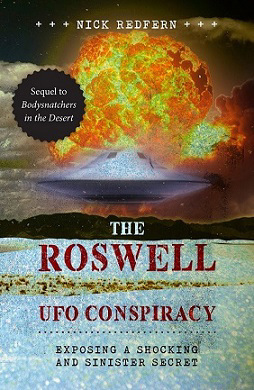
In the war, the secrecy existed so that the American public and the media would not learn that the Japanese – to an extremely limited, small degree – had made it to the United States in large balloons. Morale had to be carefully and diligently maintained. Telling the American people that the Japanese had reached the U.S. mainland –in balloons, no less – would definitely not have been a good thing. In 1947, however, the secrecy existed to prevent the same public and media from finding out that just a couple of years after the war was over, Japan and the U.S. were in cahoots of a very controversial kind. A few more words from Keel, who said that the reports of Japanese balloons, and particularly those with crews, “…would explain many other things, too, such as the persistent rumors in the 1940s about the bodies of small, Oriental-looking men in flight suits that were supposedly recovered in various western states.” In terms of those same “persistent rumors” to which he referred, Keel, was, of course, talking about tales coming out of the American southwest of dead, dwarfish aliens and wrecked flying saucers. Roswell being the premier persistent rumor, with Aztec dutifully trailing behind – as it always has done to its “big brother.”
In pursuing the Japanese balloon angle, John Keel came closer than many realized to the truth of the Roswell-Japan connection. Probably closer than even Keel, himself, ever quite realized. Keel’s mistake was not that he chose to chase down the Japanese trail: he certainly got the right country. Keel’s mistake was that he got the wrong Japanese balloon. Keel diligently went after the flimsy wartime Fugos, when he should have really been looking for the much bigger, and far sturdier, Japanese-originated balloons. They were the ones that were secretly tested in New Mexico in the summer of 1947, and which may also have been responsible for a handful of penetrations of the United States by the Japanese military in 1945, just before the war ended. Nevertheless, Keel’s work was – and remains – an important part of the story you are reading.
So, there are a number of things that relate to the Japanese scenario that fell into my lap in 2001. And the one that John Keel got into in the 1990s, was slightly different. Yes, there were some differences, but, there were some intriguing similarities. Both our scenarios involved humans, rather than aliens. And that there was a great amount of controversy. For example, I remember the late Stanton Friedman got into the Japanese angle. He did not like it. In other words, Stan flipped his lid. Friedman did the same with my Body Snatchers in the Desert book: he flipped. Of course, the reason why Friedman flipped was because if my theory was correct, it would make the Majestic 12 documents totally bogus and Stan most definitely did not want that. In fact, post-Body Snatchers in the Desert Stan was always very icy with me. Too bad. That’s how it goes. And, it’s how Ufology goes, too!
What should we think of all this? Well, the most important thing of all, is that the theory I and Keel followed (the “human angle,” rather than the “alien angle”) had nothing to do with aliens, but plenty to do with human experiments. Of course, so many don’t want to hear that. Too bad. Take a close look at thos elike me who have followed the “human” aspect might not like what they see, but it is far more plausible than the “E.T.” issue. If the truth of Roswell does come through, one day, I’m confidant it won’t have anything to do with aliens.

